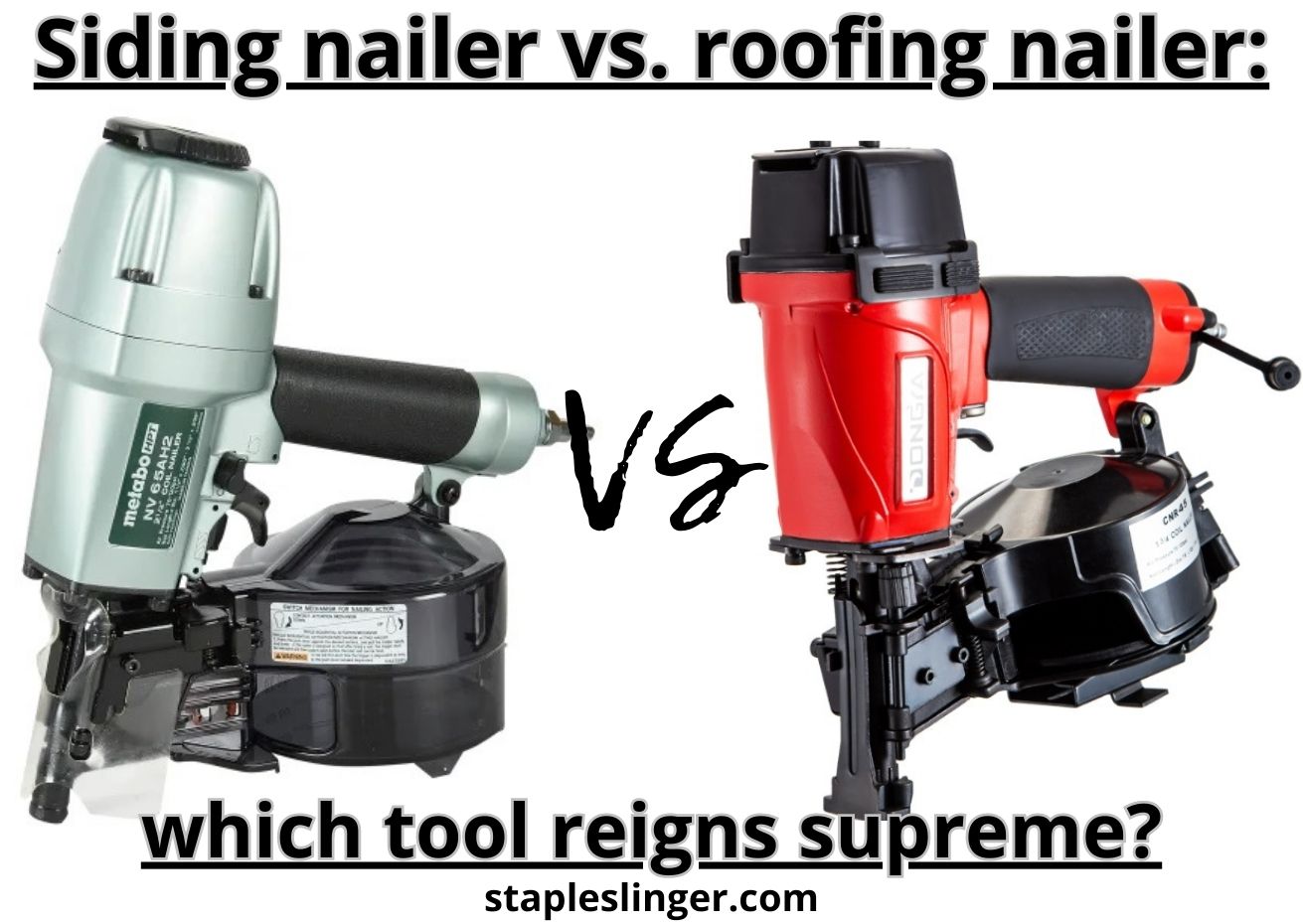Siding Nailer vs. Roofing Nailer: which tool reigns supreme?
Welcome to our blog post where we dive deep into the age-old debate of siding nailer versus roofing nailer. If you’ve ever found yourself pondering which tool holds the crown when it comes to fastening materials for siding or roofing nailing jobs, you’re in the right place.
In this comprehensive guide, we’ll explore the key differences between siding nail gun and roofing nail gun, helping you make an informed decision for your next construction endeavor.
Definition and purpose of siding nailers
Siding nailers are specialized tools designed specifically for fastening siding materials to the exterior of buildings.
They are powerful pneumatic or cordless tools that efficiently drive nails into various types of siding, such as vinyl, fiber cement, wood, and composite materials.
The primary purpose of a siding nailer is to provide a quick and secure way to attach siding panels to exterior walls, enabling a smooth and professional installation process. The principal mechanism here is a solenoid metal piston.
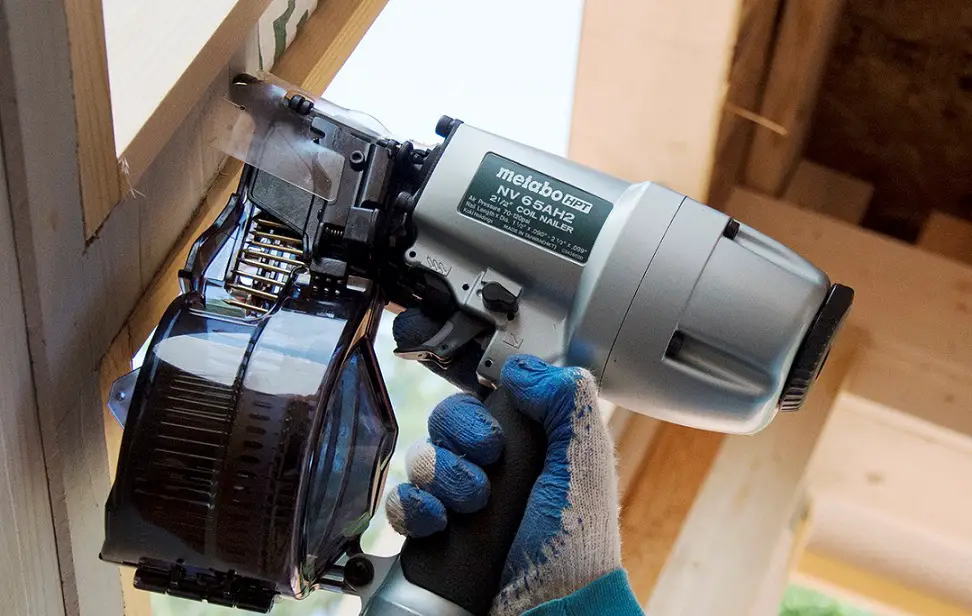
Features and specifications of siding nailers
Nail size and angle. Siding nailer typically use shorter nails with a gauge ranging from 15 to 16. Siding nailers are specifically designed for siding applications and have a small head size to minimize their visibility once installed.
Depth adjustment. Most siding nails come with a depth adjustment feature, allowing users to control the depth at which the nails penetrate the siding material. This feature of siding nail guns ensures that the nails are properly set without damaging the surface.
Air or cordless operation. The siding nailer can be powered either by air pressure or by batteries, depending on the model. Air-pressure siding nailer is commonly used in professional settings, while cordless nailers offer greater portability and flexibility for smaller projects or areas without easy access to power outlets.
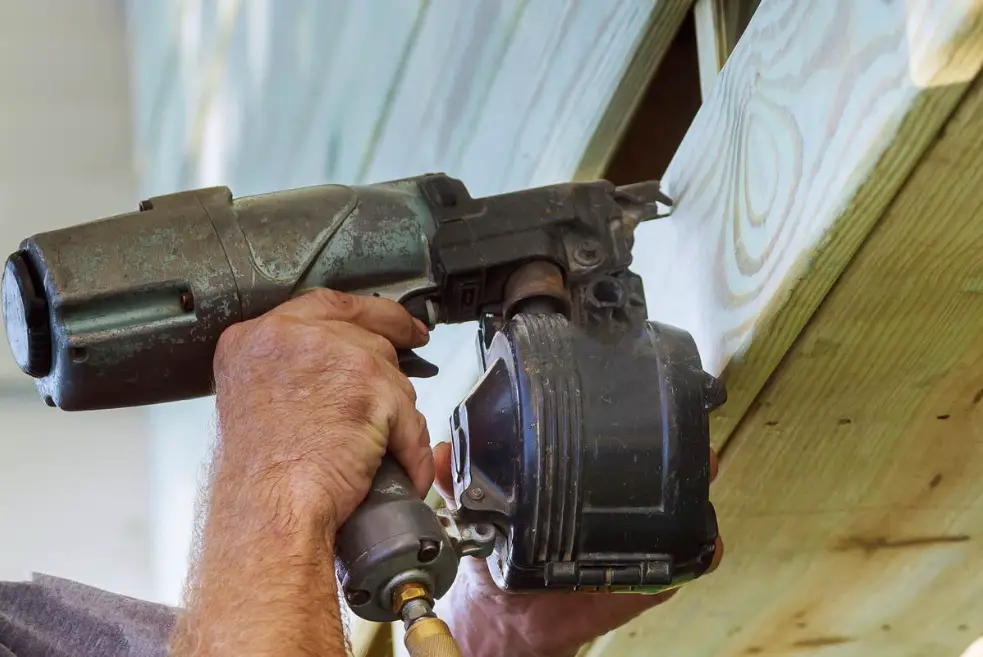
Benefits of using a siding nailer
Time and labor savings. Siding nails are specifically engineered to drive nails efficiently and accurately, significantly reducing installation time compared to manual hammering. This feature of the siding nailer allows for faster completion of projects, saving both time and labor costs.
Improved safety. Using a siding nailer minimizes the risk of accidental injuries associated with manual hammering. A siding nailer provides better control for your siding project and reduces the chances of missed strikes, potentially preventing finger or hand injuries.
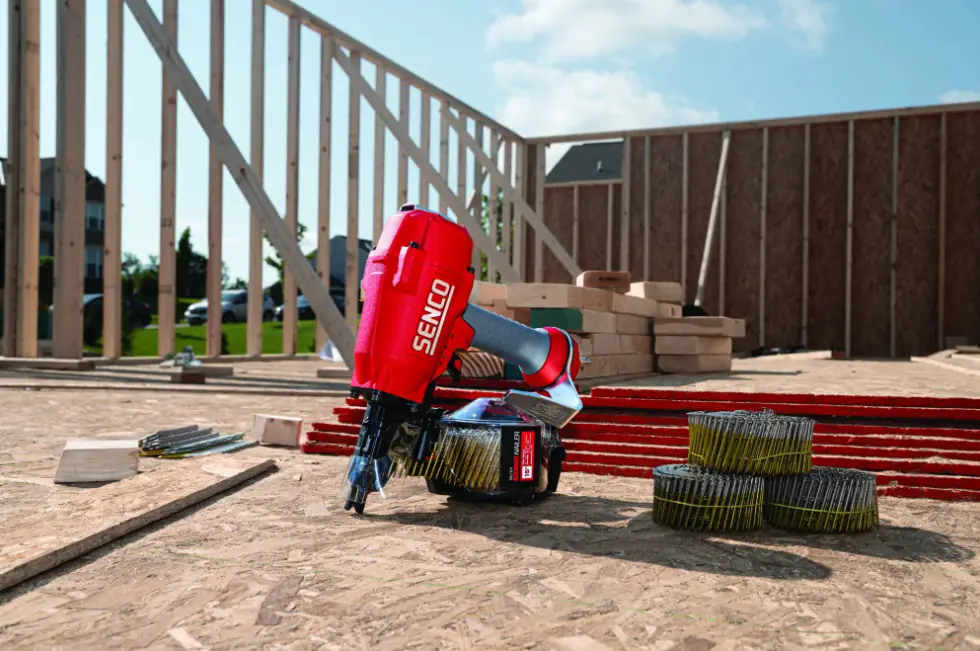
Examples of siding projects
Vinyl siding installation. Siding nailers are particularly effective for installing vinyl siding, as they can quickly and securely fasten the lightweight panels without damaging them.
Fiber cement siding. Fiber cement siding, known for its durability and resistance to harsh weather conditions, requires strong and precise fastening. Siding nailer provides the necessary power and accuracy to attach fiber cement siding and other nailing jobs effectively.
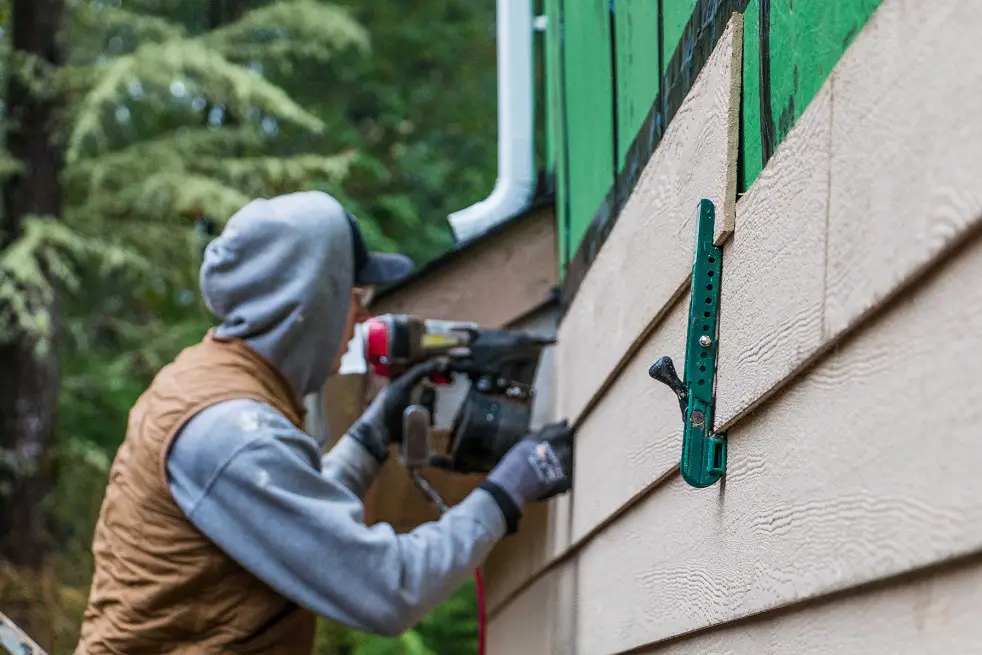
Definition and purpose of roofing nailers
Roofing nail guns are specialized tools designed specifically for the installation materials of roofing, such as shingles, felt, and underlayment.
These nailers are specifically engineered to drive roofing nails quickly and efficiently, making the installation process smoother and more precise.
Roofing nail guns are essential for roofing contractors and DIY enthusiasts working on roofing projects such as re-roofing, as they significantly expedite the installation process.
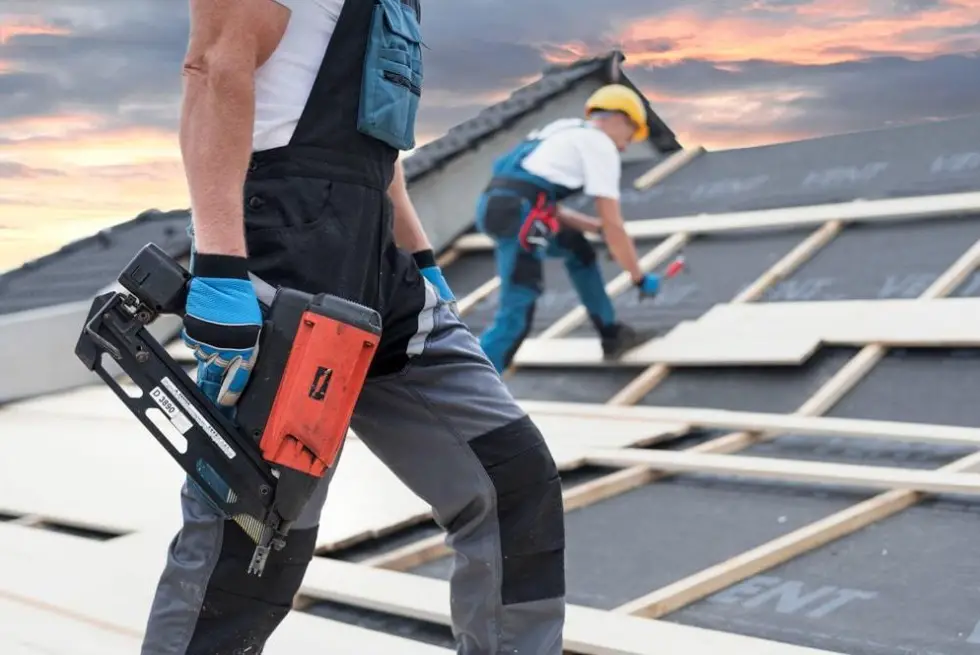
Features and specifications
Nail size and angle. Roofing nailers are designed to accommodate longer nails with a larger gauge, typically ranging from 11 to 12.
These nails are specifically designed to securely fasten materials, ensuring durability and resistance to wind uplift.
Coil magazine. Unlike siding nails, roofing nailers often feature coil nailers magazine, allowing for larger nail capacity.
Adjustable depth control. The roofing nail gun comes equipped with depth adjustment settings, allowing users to control the depth at which the nails penetrate the roofing material.
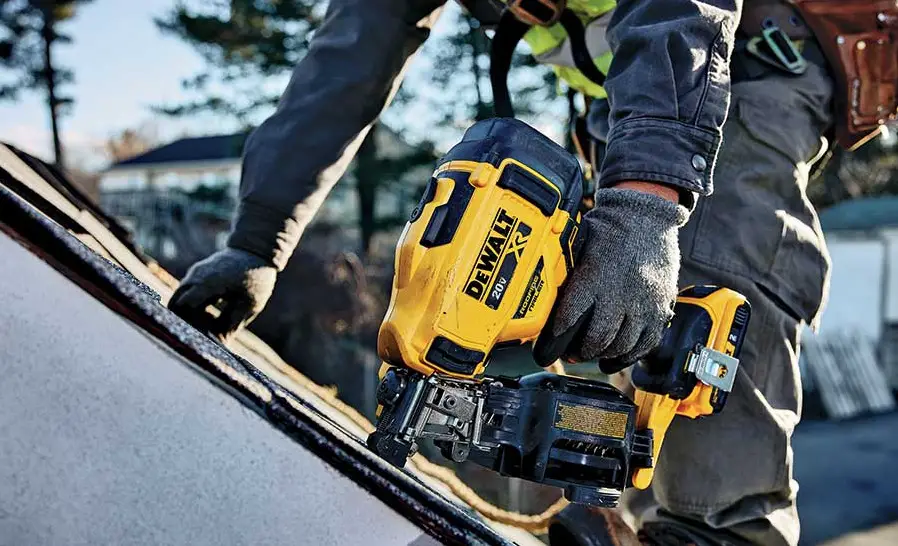
Advantages of using a roofing nailer
Time and labor efficiency. Roofing nailers significantly expedite the installation process by driving nails quickly and accurately. This saves considerable time and work compared to traditional manual methods, allowing for more efficient completion of roofing projects.
They also usually have a smooth shank, making them easier to remove, and are designed to hold shingles flush against the roof
Improved accuracy and consistency. Roofing nailer ensures consistent nail placement and depth, resulting in a neat and professional-looking roof installation. This eliminates the risk of loose or unevenly installed shingles, ensuring the roof’s longevity and structural integrity.
Enhanced safety. Roofing nailers offer improved safety during the installation process. They minimize the risk of missed strikes and accidental injuries associated with manual hammering, ensuring a safer working environment for roofers.
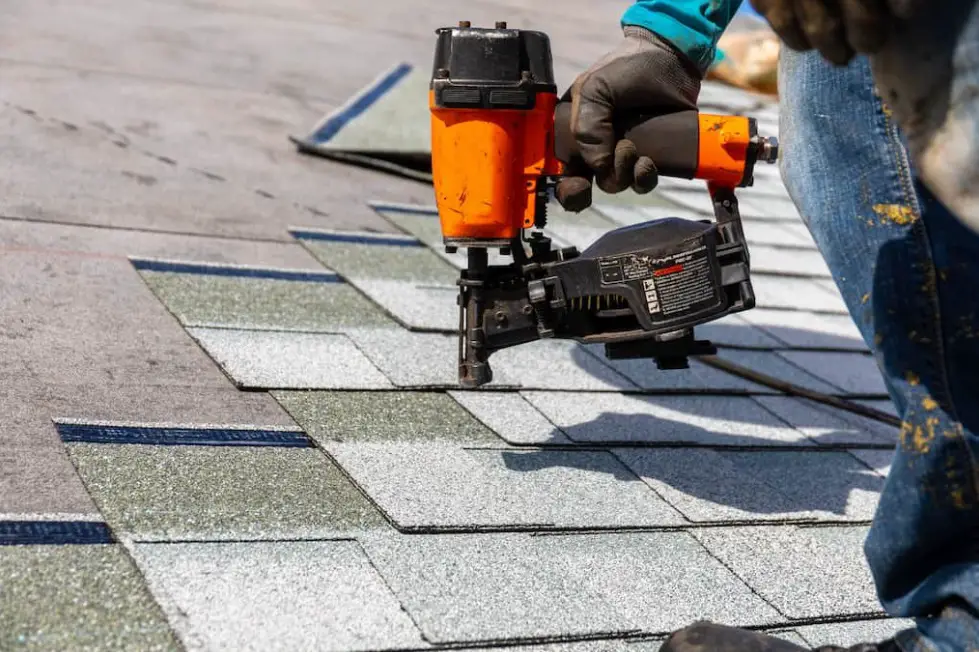
Examples of roofing projects
Roof shingles. Roofing nails are particularly effective in installing asphalt shingles and fiberglass shingles, providing a fast and secure attachment. Roofing nailer enables precise placement of the nails, ensuring proper alignment and minimizing the risk of shingle uplift during adverse weather conditions.
Roofing repairs and replacements. Whether it’s repairing a damaged section of the roof or re-roofing, roofing nails expedite the process and ensure consistent and secure attachment of new materials.
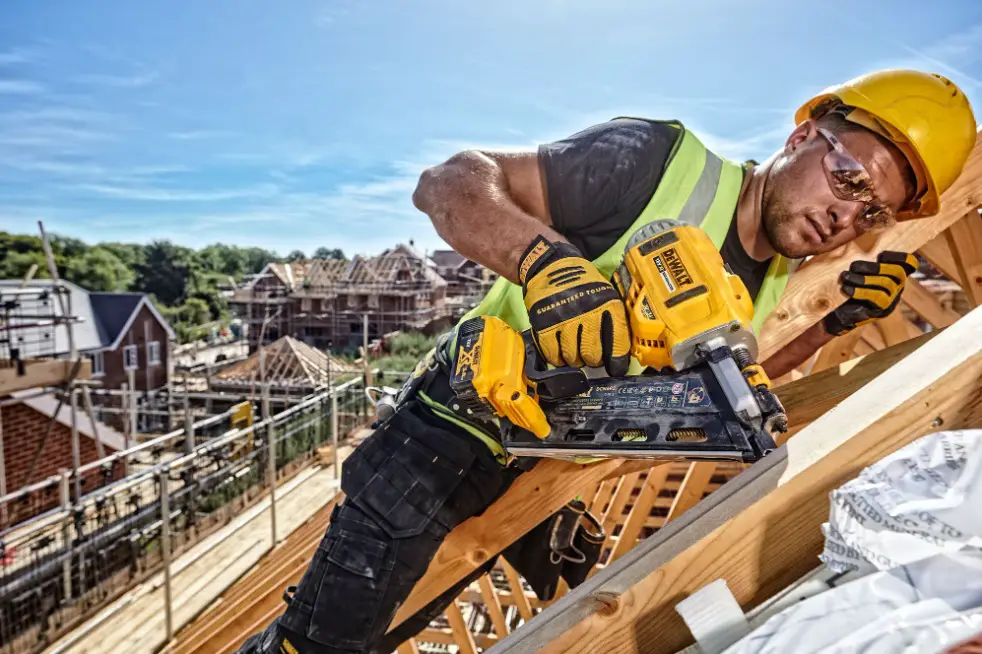
Key differences between siding nailer vs roofing nailer
Now, that we discussed the definition and the purpose of each nailer, let’s see what are their key differences.
Nail size and angle
One of the primary differences between siding nailers and roofing nailers lies in the nail size and angle they accommodate.
Siding nailer typically uses shorter nails with a gauge ranging from 15 to 16. These nails are designed specifically for securing siding materials to the exterior of buildings.
In contrast, roofing nails are equipped to handle longer nails with a larger nail head, typically ranging from 11 to 12. These longer nails are necessary to securely fasten roofing materials, such as shingles, felt, and underlayment.
Magazine capacity and loading mechanism
The magazine capacity and loading mechanism differ between siding nails and roofing nails.
Siding nailers typically have a smaller magazine capacity due to the shorter nails used for siding projects.
However, they are designed for efficient reloads and quick access to nails.
On the other hand, roofing nails often feature a coil magazine, allowing for a larger nail capacity.
This reduces the frequency of reloading, enabling uninterrupted work and improved productivity.
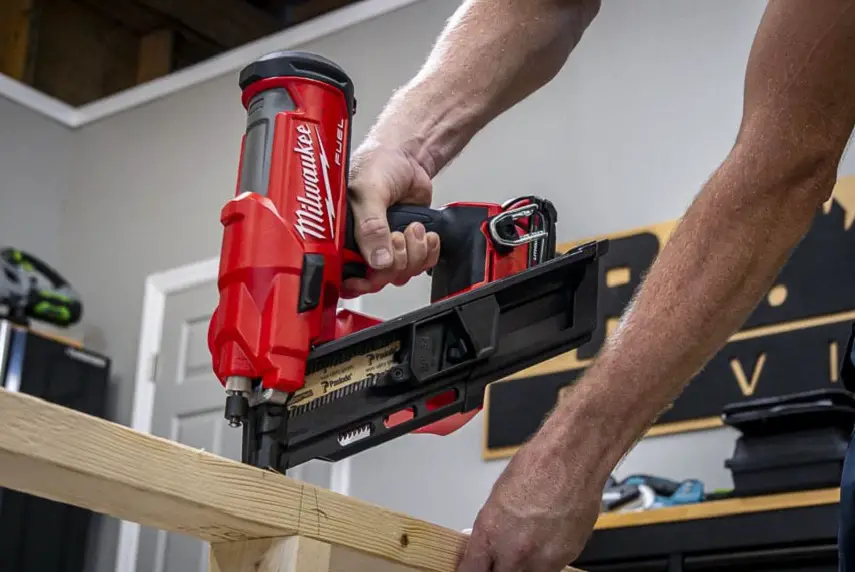
Durability and construction
Durability and construction vary between siding nailers and roofing nailers to accommodate their respective applications.
Siding nails are typically constructed with lightweight materials to reduce user fatigue during siding installations.
They prioritize maneuverability and portability while maintaining durability for consistent use.
Roofing nails, on the other hand, are built to withstand the demands of working on roofs.
Choosing the right nailer for your project
We went through the key differences between siding nailer vs roofing nailer. And now it’s time to choose the right and best one for your projects.
Factors to consider between siding nailer vs roofing nailer
- Project type. Consider the nature of your project. If you are primarily focused on siding installations, a siding nailer would be the more suitable choice. For roofing projects, a roofing nailer is specifically designed to handle the demands materials of roofing.
- Nail size and angle. Evaluate your project’s nail size and angle requirements. Siding nails use shorter nails with a smaller gauge, while roofing nail gun accommodate longer nails with a larger gauge.
- Material compatibility. Consider the type of materials you will be working with. Siding nails are ideal for fastening siding materials like vinyl, wood, and composite, whereas roofing nails are designed for securing materials such as shingles, felt, and underlayment.
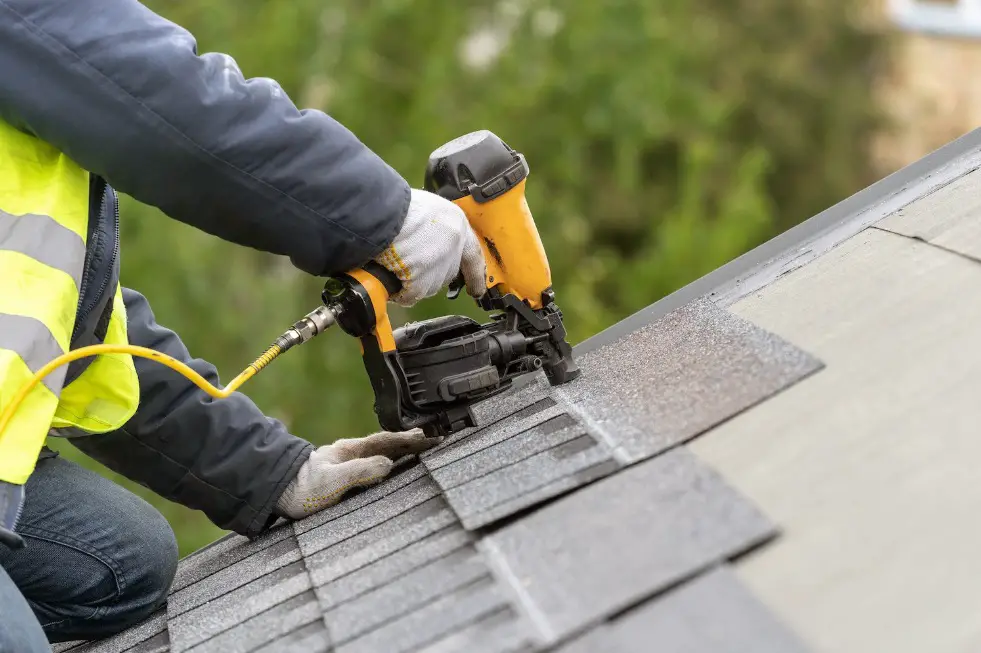
Project-specific considerations for siding and roofing applications
Siding applications. For siding projects, consider factors such as the siding material, surface area to be covered, and desired installation speed. Siding nails offer quick and efficient installation, making them suitable for larger projects requiring precise and consistent attachment.
You should also know that if you consider using a framing nailer and pneumatic siding nailers instead of a siding nailer, the framing nailer and pneumatic siding nailer can compromise the appearance and weather-tightness of the siding installation.
First, framing nailers use thicker and longer nails compared to siding nailers, which can damage the siding material or cause splitting. Plus framing nailers do not have depth adjustment settings, which can result in overdriving the nails and causing damage to the siding or even puncturing through the material.
Roofing applications. When working on roofing projects, take into account the roofing material, the slope of the roof, and the overall scale of the project. Roofing nailers excel in securely fastening materials, ensuring proper alignment, and minimizing the risk of shingle uplift.
So, choosing a roofing nailer is vital for their types. There is a different type of roofing nailer based on power source: spring-loaded pneumatic solenoid. As its name, this nailer uses a spring to shoot nails.
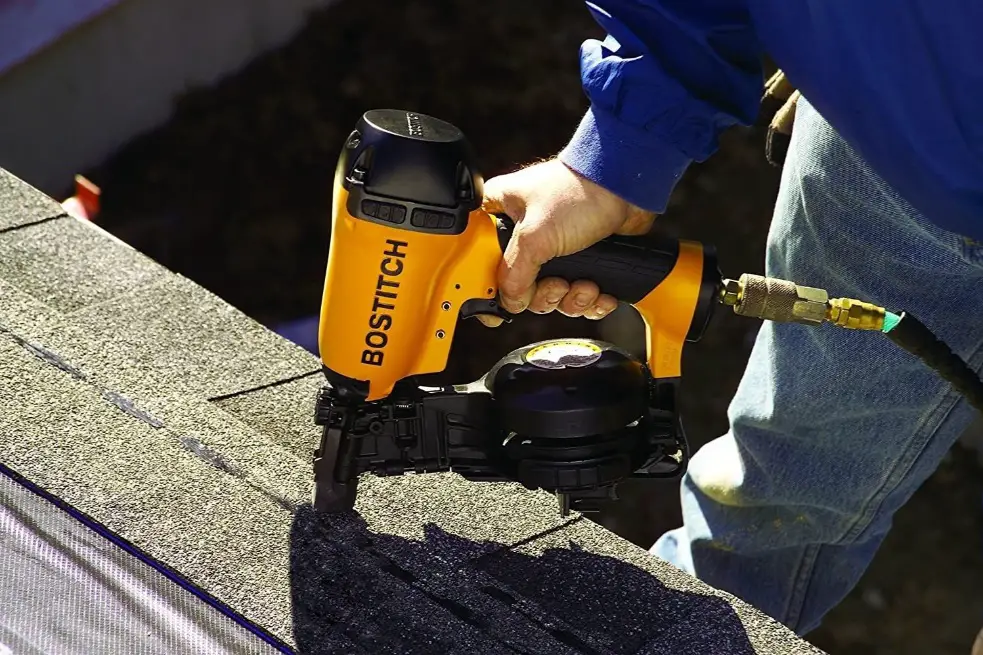
Conclusion
Siding nailer vs roofing nailer: what’s the difference? To sum up, siding nailers and roofing nailers have distinct differences in design and application. Siding nailers are for siding projects, while roofing nailers excel in roofing applications. Consider factors like project type, nail size, material compatibility, and budget to choose the right nailer.
FAQs:
This is not recommended. Siding nails are designed for siding projects and provide better performance.
Siding nailers are for attaching siding, while roofing nailers are for roofing materials. They differ in nail size, angle, and design.
This is not recommended. Hardie board siding requires specific tools and techniques. Use a siding nailer for proper installation.
Siding nailers are used to attach siding materials, such as vinyl, wood, or composite, to the exterior of buildings.
Read on site Best Staplers for 50 Pages (2024)

